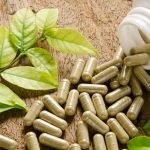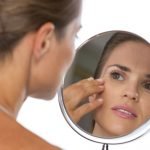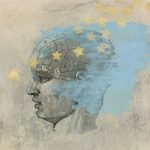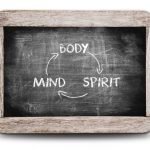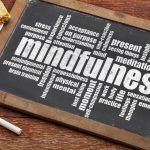Mood Disorders and Insomnia
Carrie Decker, ND
Tolle Causam
Potential Physiological Mediators
Supporting patients who experience anxiety, depression, and insomnia often is a long and arduous challenge for both the patient and provider. Although these conditions have standard labels, there often are many changing contributing factors. Genetic assessment can be used to direct treatment, and specific nutrient supplementation using nutrient forms such as methylated folate and methylcobalamin can impact neurotransmitter balance and ease symptoms. Even though these nutrients may help facilitate enzymatic function and neurotransmitter metabolism, it is worthwhile to consider the aspects of physiology that may be dysfunctional and how supplemental therapies might best address them.
HPA Axis Dysfunction
Hyperactivity of the hypothalamic-pituitary-adrenal (HPA) axis and increased basal cortisol levels are common in patients with depression.1 Studies have shown that there is a reduced sensitivity of the glucocorticoid receptor at the level of the hypothalamus and pituitary, leading to impaired negative feedback.2,3 Animal studies have shown that cortisol inhibits melatonin synthesis in settings of stress,4 and human studies using prednisolone appear to corroborate this finding.5 Therefore, it may not be surprising that sleep difficulties are frequently associated with depression. On the other hand, in long-standing anxiety disorders, a lower cortisol awakening response has been observed, although findings from studies investigating total cortisol response are inconsistent.6 Nonetheless, sleep difficulties are also common with anxiety disorders and are associated with mental activity or worrying.
Are Brain Wave Patterns to Blame?
The alpha rhythm of brain wave patterns, known as alpha waves, predominantly occur during wakeful relaxation with closed eyes, and are present during activities such as meditation.7 Mixed findings exist concerning the alpha wave activity in conditions of anxiety, depression, and insomnia, likely due to the existence of slower and faster alpha waves, different regions of centralization, and other coexisting conditions.8,9 Interestingly, alpha wave activity may be inversely associated with systemic cortisol levels, as a study of individuals practicing yoga suggests. In this study of seasoned yoga practitioners, increasing alpha wave activity was correlated with decreasing serum cortisol levels during yoga practice.10 An increase in alpha wave activity overall is generally associated with an alert yet relaxed state and improved concentration, both of which are often impacted in depression and anxiety.
Glutamate and GABA
Neurotransmitters most often discussed in relation to anxiety and depression are serotonin, dopamine, and norepinephrine; however, other neurotransmitters, such as glutamate and γ-aminobutyric acid (GABA) also play an important role in mood regulation and arousal. Glutamate receptor subtypes have been shown to modulate excitability associated with anxiety, while in depression, a hyperfunctioning glutaminergic system may be an issue.11,12 Treatment with glutaminergic receptor antagonists such as ketamine or memantine have been shown to have positive effects in both anxiety and depression, including treatment-resistant depression. Increased inflammation has been observed in individuals who are responsive to glutamate antagonists, and inflammatory cytokines have been shown to affect glutamate metabolism.13
Concentrations of GABA, an inhibitory neurotransmitter, have been shown to be lower in people with major depressive disorder. In individuals with post-traumatic stress disorder (PTSD), lower levels of GABA were found specifically in the insular cortex, a region of the brain associated with emotional responses such as fear, and these lower GABA levels were associated with anxiety as both a condition and a symptom.15 Lower GABA concentrations in individuals with PTSD have been found to be associated with poor sleep quality.16
As a fermentation byproduct, GABA is found in teas such as pu-erh and food like kimchi.17,18,19 GABA supplementation has been shown to significantly increase alpha wave patterns during stress and reduce levels of anxiety in humans;20,21 however, the impact of GABA-promoting pharmaceutical agents on depression varies.14 The ability of orally administered GABA to cross the blood-brain barrier (BBB) has come into question. There is evidence for the presence of a GABA transporter in the BBB, but animal models suggest that the efflux rate may be considerably higher than influx rate.22 Liposomal delivery systems have been shown to facilitate transport across the BBB and increase availability of therapeutic agents in the central nervous system.23 Inflammatory mediators such as histamine and bradykinin increase BBB permeability and may contribute to individual variability.24 It also has been proposed that the observed effects of supplemental GABA are due to activation of GABA receptors in the enteric nervous system, and are modulated by the vagus nerve.25
Oxidative Stress and Mood Disorder
Increased oxidative and nitrosative stress have been shown to contribute to depression via numerous mechanisms.26 Individuals with unipolar and bipolar depression have been observed to have increased levels of markers of oxidative damage to lipids.27,28 Lipid peroxidation and other forms of oxidative damage are associated with impaired cellular membrane fluidity and mitochondrial dysfunction, which may play a role in the pathogenesis of depression.29 Increased oxidative stress is inherently associated with inflammation, and, perhaps not surprisingly, a meta-analysis showed that patients with depression have higher levels of pro-inflammatory cytokines such as interleukin (IL)-1, IL-6, and tumor necrosis factor α (TNF-α),30 as well as elevated levels of acute phase reactants such as C-reactive protein (CRP).31 Although antidepressants are best known for their impacts on neurotransmitter availability, they also may impact depression by having anti-inflammatory and antioxidant effects.32,33
A Case for Melatonin
Melatonin is primarily produced in the pineal gland, although other tissues, such as the retina and lens of the eye, gonads, bone marrow, and gut, produce small amounts. Melatonin not only acts as a regulator of the circadian rhythm, but also is a neuroprotective antioxidant. Many studies have found that decreased melatonin production and disrupted rhythms occur with age,34,35,36 and factors such as electromagnetic pollution also may influence melatonin production and the circadian system.37 Decreased levels of melatonin and an altered circadian rhythm have been observed in depressed subjects,38,39 possibly in relation with increased cortisol levels.40 Because melatonin is synthesized from serotonin, lower levels of serotonin, and its precursor tryptophan, can contribute to lower melatonin levels.41 Single nucleotide polymorphisms associated with the rate-limiting melatonin synthesis enzyme, acetylserotonin methyltransferase, are associated with recurrent depressive disorder.42
Melatonin has been shown to protect against central nervous system oxidative damage, reducing lipid peroxidation and oxidative damage to nuclear DNA while stimulating mRNA levels of superoxide dismutase and the activities of glutathione peroxidase, glutathione reductase, and glucose-6-phosphate dehydrogenase.43,44 Evidence from experimental data and clinical studies show that melatonin has anti-inflammatory effects in the central nervous system, reducing pro-inflammatory cytokines including IL-6, IL-8, and TNF-α.45 By preventing lipid peroxidation, melatonin plays a role in maintaining the fluidity of biological membranes, which is necessary for cellular signaling and mitochondrial function.46
Melatonin receptor agonists and prolonged-release melatonin have been studied for the treatment of insomnia and depression.47 Agomelatine, a melatonin-receptor agonist and a weak selective serotonergic receptor (5-HT2C) antagonist, has been shown to improve depression and sleep quality,48 and may reduce associated anxiety.49 Melatonin has been shown in a variety of clinical settings to positively impact depression,50,51 both as a monotherapy and in combination with antidepressants.52,53 Improvements in depression-related insomnia and fatigue have been seen with sustained-release melatonin.54 In a literature review, melatonin was found to reduce anxiety associated with surgical procedures.55
Green Tea: More than Antioxidants
Green tea is well known for its high amounts of antioxidants, particularly epigallocatechin gallate (EGCG); however, green tea also contains a high amount of the amino acid L-theanine. L-theanine is widely used and studied in Japan, a culture particularly known for their tea consumption. L-theanine has been observed to promote relaxation and reduce stress, possibly by increasing alpha wave activity and by blocking the binding of L-glutamic acid to excitatory glutamate receptors in the central nervous system.56,57,58
L-theanine has been shown to impact neurotransmitter balance. Animal research suggests that L-theanine can pass through the BBB and significantly increase brain serotonin and dopamine levels, particularly in the regions of the striatum, hypothalamus, and hippocampus.59 This L-theanine-induced rise in serotonin and dopamine has been correlated with decreased serum corticosterone levels.60 Additionally, continuous administration of L-theanine has been shown to increase expression of brain-derived neurotrophic factor (BDNF),61 a protein that increases neural plasticity and promotes neurogenesis, including the genesis of dopaminergic and serotonergic neurons.62 Increased BDNF levels are thought to be a mechanism by which pharmaceuticals, supplements, and exercise have a positive impact on anxiety and depression.63,64,65
Supplementation with L-theanine has been shown to have a relaxing effect in a resting state,66 reduce heart rate and salivary immunoglobulin A (sIgA) secretion in acute stress,67 reduce anxiety and attenuate blood pressure during a challenging mental task,68 and reduce salivary α-amylase activity and subjective experience of stress during academic challenges.69 These changes in the physiological and experiential responses to stress are thought to be mediated by reduced sympathetic nervous system activity, as measured by heart-rate variability and salivary α-amylase activity. As stress and the physiological stress response are known to affect anxiety, depression, and sleep, the consideration of L-theanine as an adjunctive treatment for these conditions is well supported. L-theanine has been shown to improve aspects of sleep quality in boys with attention-deficit/hyperactivity disorder,70 and reverse caffeine-induced decreases in slow-wave sleep in animals.71 Although L-theanine has not been studied for the treatment of depression in humans, animal studies suggest an antidepressant-like effect.72
References:
- Pariante CM, Lightman SL. The HPA axis in major depression: classical theories and new developments. Trends Neurosci. 2008;31(9):464–468.
- Coppen A, Abou-Saleh M, Milln P, et al. Dexamethasone suppression test in depression and other psychiatric illness. Br J Psychiatry. 1983;142:498–504.
- Lopez-Duran NL, Kovacs M, George CJ. Hypothalamic-pituitary-adrenal axis dysregulation in depressed children and adolescents: a meta-analysis. Psychoneuroendocrinology. 2009;34(9):1272–1283.
- López-Patiño MA, Gesto M, Conde-Sieira M, et al. Stress inhibition of melatonin synthesis in the pineal organ of rainbow trout (Oncorhynchus mykiss) is mediated by cortisol. J Exp Biol. 2014;217(Pt 8):1407–1416.
- Galbo H, Kall L. Circadian variations in clinical symptoms and concentrations of inflammatory cytokines, melatonin, and cortisol in polymyalgia rheumatica before and during prednisolone treatment: a controlled, observational, clinical experimental study. Arthritis Res Ther. 2016;18(1):174.
- Hek K, Direk N, Newson RS, et al. Anxiety disorders and salivary cortisol levels in older adults: a population-based study. Psychoneuroendocrinology. 2013;38(2):300–305.
- Khare KC, Nigam SK. A study of electroencephalogram in meditators. Indian J Physiol Pharmacol. 2000;44(2):173–178.
- Yadollahpour A, Nasrollahi H. Quantitative Electroencephalography for Objective and Differential Diagnosis of Depression: A Comprehensive Review. Glob J Health Sci. 2016;8(11):249.
- Knyazev GG, Savostyanov AN, Levin EA. Alpha oscillations as a correlate of trait anxiety. Int J Psychophysiol. 2004;53(2):147–160.
- Kamei T, Toriumi Y, Kimura H, et al. Decrease in serum cortisol during yoga exercise is correlated with alpha wave activation. Percept Mot Skills. 2000;90:1027–1032.
- Riaza Bermudo-Soriano C, Perez-Rodriguez MM, Vaquero-Lorenzo C, Baca-Garcia E. New perspectives in glutamate and anxiety. Pharmacol Biochem Behav. 2012;100(4):752–774.
- Paslakis G, Gass P, Deuschle M. The role of the glutamatergic system in pathophysiology and pharmacotherapy for depression: preclinical and clinical data. Fortschr Neurol Psychiatr. 2011;79(4):204–212.
- Haroon E, Miller AH. Inflammation Effects on Brain Glutamate in Depression: Mechanistic Considerations and Treatment Implications. Curr Top Behav Neurosci. 2017;31:173–198.
- Pehrson AL, Sanchez C. Altered γ-aminobutyric acid neurotransmission in major depressive disorder: a critical review of the supporting evidence and the influence of serotonergic antidepressants. Drug Des Devel Ther. 2015;9:603–624.
- Rosso IM, Weiner MR, Crowley DJ, et al. Insula and anterior cingulate GABA levels in posttraumatic stress disorder: preliminary findings using magnetic resonance spectroscopy. Depress Anxiety. 2014;31(2):115–123.
- Meyerhoff DJ, Mon A, Metzler T, Neylan TC. Cortical gamma-aminobutyric acid and glutamate in posttraumatic stress disorder and their relationships to self-reported sleep quality. Sleep. 2014;37(5):893–900.
- Dhakal R, Bajpai VK, Baek KH. Production of gaba (γ – Aminobutyric acid) by microorganisms: a review. Braz J Microbiol. 2012;43(4):1230–1241.
- Makino Y, Soga N, Oshita S, et al. Stimulation of gamma-aminobutyric acid production in vine-ripe tomato (Lycopersicon esculentum Mill.) fruits under modified atmospheres. J Agric Food Chem. 2008;56(16):7189–7193.
- Patra JK, Das G, Paramithiotis S, Shin HS. Kimchi and Other Widely Consumed Traditional Fermented Foods of Korea: A Review. Front Microbiol. 2016;7:1493.
- Yoto A, Murao S, Motoki M, et al. Oral intake of γ-aminobutyric acid affects mood and activities of central nervous system during stressed condition induced by mental tasks. Amino Acids. 2012;43(3):1331–1337.
- Abdou AM, Higashiguchi S, Horie K, et al. Relaxation and immunity enhancement effects of gamma-aminobutyric acid (GABA) administration in humans. Biofactors. 2006;26(3):201–208..
- Kakee A, Takanaga H, Terasaki T, et al. Efflux of a suppressive neurotransmitter, GABA, across the blood-brain barrier. J Neurochem. 2001;79(1):110–118.
- Alyautdin R, Khalin I, Nafeeza MI, et al. Nanoscale drug delivery systems and the blood-brain barrier. Int J Nanomedicine. 2014;9:795–811.
- Abbott NJ. Inflammatory mediators and modulation of blood-brain barrier permeability. Cell Mol Neurobiol. 2000;20(2):131–47.
- Boonstra E, de Kleijn R, Colzato LS, et al. Neurotransmitters as food supplements: the effects of GABA on brain and behavior. Front Psychol. 2015;6:1520.
- Moylan S, Berk M, Dean OM, et al. Oxidative & nitrosative stress in depression: why so much stress? Neurosci Biobehav Rev. 2014;45:46–62.
- Gałecki P, Szemraj J, Bieńkiewicz M, et al. Lipid peroxidation and antioxidant protection in patients during acute depressive episodes and in remission after fluoxetine treatment. Pharmacol Rep. 2009;61(3):436–447.
- Yager S, Forlenza MJ, Miller GE. Depression and oxidative damage to lipids. Psychoneuroendocrinology. 2010;35(9):1356–1362.
- Jou SH, Chiu NY, Liu CS. Mitochondrial dysfunction and psychiatric disorders. Chang Gung Med J. 2009;32(4):370–379.
- Dowlati Y, Herrmann N, Swardfager W, et al. A meta-analysis of cytokines in major depression. Biol Psychiatry. 2010;67(5):446–457.
- Pasco JA, Nicholson GC, Williams LJ, et al. Association of high-sensitivity C-reactive protein with de novo major depression. Br J Psychiatry. 2010;197(5):372–377.
- Dinan TG. Inflammatory markers in depression. Curr Opin Psychiatry. 2009;22(1):32–36.
- Caiaffo V, Oliveira BD, de Sá FB, Evêncio Neto J. Anti-inflammatory, antiapoptotic, and antioxidant activity of fluoxetine. Pharmacol Res Perspect. 2016;4(3):e00231.
- Sack RL, Lewy AJ, Erb DL, et al. Human melatonin production decreases with age. J Pineal Res. 1986;3(4):379–388.
- Zhao ZY, Xie Y, Fu YR, et al. Aging and the circadian rhythm of melatonin: a cross-sectional study of Chinese subjects 30-110 yr of age. Chronobiol Int. 2002;19(6):1171–1182.
- Zhou JN, Liu RY, van Heerikhuize J, et al. Alterations in the circadian rhythm of salivary melatonin begin during middle-age. J Pineal Res. 2003;34(1):11–16.
- Lewczuk B, Redlarski G, Zak A, et al. Influence of electric, magnetic, and electromagnetic fields on the circadian system: current stage of knowledge. Biomed Res Int. 2014;2014:169459.
- Sundberg I, Ramklint M, Stridsberg M, et al. Salivary Melatonin in Relation to Depressive Symptom Severity in Young Adults. PLoS One. 2016;11(4):e0152814.
- Nair NP, Hariharasubramanian N, Pilapil C. Circadian rhythm of plasma melatonin in endogenous depression. Prog Neuropsychopharmacol Biol Psychiatry. 1984;8(4-6):715–718.
- Claustrat B, Chazot G, Brun J, et al. A chronobiological study of melatonin and cortisol secretion in depressed subjects: plasma melatonin, a biochemical marker in major depression. Biol Psychiatry. 1984;19(8):1215–1228.
- Owens MJ, Nemeroff CB. Role of serotonin in the pathophysiology of depression: focus on the serotonin transporter. Clin Chem. 1994;40(2):288–295.
- Gałecki P, Szemraj J, Bartosz G, et al. Single-nucleotide polymorphisms and mRNA expression for melatonin synthesis rate-limiting enzyme in recurrent depressive disorder. J Pineal Res. 2010;48(4):311–317.
- Reiter RJ. Oxidative damage in the central nervous system: protection by melatonin. Prog Neurobiol. 1998;56(3):359–384.
- Rodriguez C, Mayo JC, Sainz RM, et al. Regulation of antioxidant enzymes: a significant role for melatonin. J Pineal Res. 2004;36(1):1–9.
- Esposito E, Cuzzocrea S. Antiinflammatory activity of melatonin in central nervous system. Curr Neuropharmacol. 2010;8(3):228_242.
- García JJ, López-Pingarrón L, Almeida-Souza P, et al. Protective effects of melatonin in reducing oxidative stress and in preserving the fluidity of biological membranes: a review. J Pineal Res. 2014;56(3):225–237.
- Laudon M, Frydman-Marom A. Therapeutic effects of melatonin receptor agonists on sleep and comorbid disorders. Int J Mol Sci. 2014;15(9):15924–15950.
- Hickie IB, Rogers NL. Novel melatonin-based therapies: potential advances in the treatment of major depression. Lancet. 2011;378(9791):621–631.
- De Berardis D, Di Iorio G, Acciavatti T, et al. The emerging role of melatonin agonists in the treatment of major depression: focus on agomelatine. CNS Neurol Disord Drug Targets. 2011;10(1):119–132.
- Serfaty MA, Osborne D, Buszewicz MJ, et al. A randomized double-blind placebo-controlled trial of treatment as usual plus exogenous slow-release melatonin (6 mg) or placebo for sleep disturbance and depressed mood. Int Clin Psychopharmacol. 2010;25(3):132–142.
- Hansen MV, Andersen LT, Madsen MT, et al. Effect of melatonin on depressive symptoms and anxiety in patients undergoing breast cancer surgery: a randomized, double-blind, placebo-controlled trial. Breast Cancer Res Treat. 2014;145(3):683–695.
- Chojnacki C, Walecka-Kapica E, Klupinska G, et al. Effects of fluoxetine and melatonin on mood, sleep quality and body mass index in postmenopausal women. J Physiol Pharmacol. 2015;66(5):665–671.
- Fava M, Targum SD, Nierenberg AA, et al. An exploratory study of combination buspirone and melatonin SR in major depressive disorder (MDD): a possible role for neurogenesis in drug discovery. J Psychiatr Res. 2012;46(12):1553–1563.
- Dalton EJ, Rotondi D, Levitan RD, et al. Use of slow-release melatonin in treatment-resistant depression. J Psychiatry Neurosci. 2000;25(1):48–52.
- Hansen MV, Halladin NL, Rosenberg J, et al. Melatonin for pre- and postoperative anxiety in adults. Cochrane Database Syst Rev. 2015;(4):CD009861.
- Nobre AC, Rao A, Owen GN. L-theanine, a natural constituent in tea, and its effect on mental state. Asia Pac J Clin Nutr. 2008;17 Suppl 1:167–168.
- Kakuda T, Nozawa A, Sugimoto A, Niino H. Inhibition by theanine of binding of [3H]AMPA, [3H]kainate, and [3H]MDL 105,519 to glutamate receptors. Biosci Biotechnol Biochem. 2002;66(12):2683–2686.
- Nathan PJ, Lu K, Gray M, Oliver C. The neuropharmacology of L-theanine(N-ethyl-L-glutamine): a possible neuroprotective and cognitive enhancing agent. J Herb Pharmacother. 2006;6(2):21–30.
- Yokogoshi H, Kobayashi M, Mochizuki M, Terashima T. Effect of theanine, r-glutamylethylamide, on brain monoamines and striatal dopamine release in conscious rats. Neurochem Res. 1998;23(5):667–673.
- Li C, Tong H, Yan Q, et al. L-Theanine Improves Immunity by Altering TH2/TH1 Cytokine Balance, Brain Neurotransmitters, and Expression of Phospholipase C in Rat Hearts. Med Sci Monit. 2016;22:662–669.
- Wakabayashi C, Numakawa T, Ninomiya M, et al. Behavioral and molecular evidence for psychotropic effects in L-theanine. Psychopharmacology (Berl). 2012;219(4):1099–1109.
- Binder DK, Scharfman HE. Brain-derived neurotrophic factor. Growth Factors. 2004;22(3):123–131.
- Björkholm C, Monteggia LM. BDNF – a key transducer of antidepressant effects. Neuropharmacology. 2016;102:72–79.
- Hurley LL, Akinfiresoye L, Nwulia E, et al. Antidepressant-like effects of curcumin in WKY rat model of depression is associated with an increase in hippocampal BDNF. Behav Brain Res. 2013;239:27–30.
- Cotman CW, Berchtold NC. Exercise: a behavioral intervention to enhance brain health and plasticity. Trends Neurosci. 2002;25(6):295–301.
- Lu K, Gray MA, Oliver C, et al. The acute effects of L-theanine in comparison with alprazolam on anticipatory anxiety in humans. Hum Psychopharmacol. 2004;19(7):457–465.
- Kimura K, Ozeki M, Juneja LR, Ohira H. L-Theanine reduces psychological and physiological stress responses. Biol Psychol. 2007;74(1):39–45.
- Yoto A, Motoki M, Murao S, Yokogoshi H. Effects of L-theanine or caffeine intake on changes in blood pressure under physical and psychological stresses. J Physiol Anthropol. 2012;31:28.
- Unno K, Tanida N, Ishii N, et al. Anti-stress effect of theanine on students during pharmacy practice: Positive correlation among salivary α-amylase activity, trait anxiety and subjective stress. Pharmacol Biochem Behav. 2013;111:128–135.
- Lyon MR, Kapoor MP, Juneja LR. The effects of L-theanine (Suntheanine®) on objective sleep quality in boys with attention deficit hyperactivity disorder (ADHD): a randomized, double-blind, placebo-controlled clinical trial. Altern Med Rev. 2011;16(4):348–354.
- Jang HS, Jung JY, Jang IS, et al. L-theanine partially counteracts caffeine-induced sleep disturbances in rats. Pharmacol Biochem Behav. 2012;101(2):217–221.
- Yin C, Gou L, Liu Y, et al. Antidepressant-like effects of L-theanine in the forced swim and tail suspension tests in mice. Phytother Res. 2011;25(11):1636–1639.
 Carrie Decker, ND, graduated with honors from the National College of Natural Medicine (now the National University of Natural Medicine) in Portland, Oregon. Dr. Decker also has graduate degrees in biomedical and mechanical engineering from the University of Wisconsin-Madison and University of Illinois at Urbana-Champaign, respectively. Dr Decker sees patients at her office in Portland, OR, as well as remotely, with a focus on gastrointestinal disease, mood imbalances, eating disorders, autoimmune disease, chronic fatigue, and skin conditions. Dr Decker also supports integrative medicine education as a Clinical Education Thought Leader with Allergy Research Group.
Carrie Decker, ND, graduated with honors from the National College of Natural Medicine (now the National University of Natural Medicine) in Portland, Oregon. Dr. Decker also has graduate degrees in biomedical and mechanical engineering from the University of Wisconsin-Madison and University of Illinois at Urbana-Champaign, respectively. Dr Decker sees patients at her office in Portland, OR, as well as remotely, with a focus on gastrointestinal disease, mood imbalances, eating disorders, autoimmune disease, chronic fatigue, and skin conditions. Dr Decker also supports integrative medicine education as a Clinical Education Thought Leader with Allergy Research Group.




